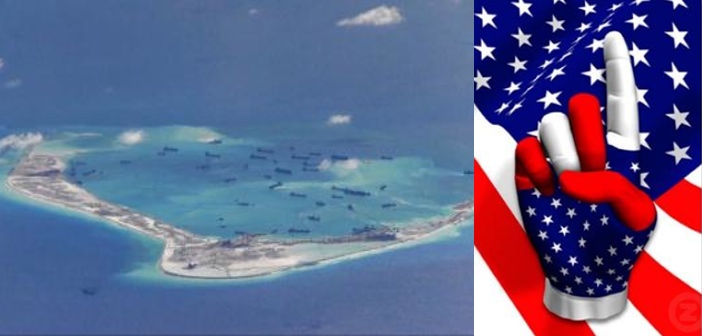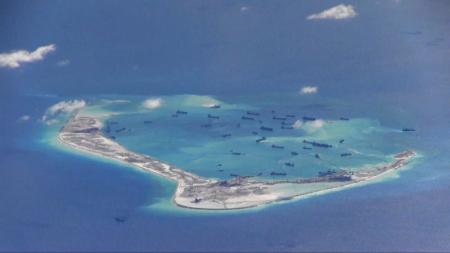image: fanpop.com
CAPTION_HERE
This article explains the issue over ownership of South China Sea in an easily understood manner. The article reads “Island building has been going on for decades, primarily by Vietnam and the Phillipines (sic) Taiwann and the Philippines have all stationed military forces on at least some of their islands.” The U.S. has never complained about it. The U.S., however, “has vigorously opposed China’s efforts.” The U.S. demonstrates now-familiar Gianism.
To sum it up, every place the U.S.
intervenes in is caught in confusion. This issue should be left to all parties
concerned who will discuss it. The U.S. should not intervene in the issue. It
is more problematic that Japan, a third party that has nothing to do with the
issue, will intervene in this issue by exercising the right to collective
self-defense.
(Note)
*Gianism (Japanese English) – Me-ism of “Yours
are mine and mine is also mine,” shown by Takeshi ‘Gian’ Gouda, one of the main
characters in the Doraemon series, who rules the neighborhood with force.
Masatoshi
Takeshita
June
11, 2015
Excerpt from REUTERS – June 10, 2015
–
Everything
you need to know about the South China Sea disputes – in under five minutes
Source:
By William Johnson
[Reuters June 6, 2015] – With regard to the issue over the ownership of South China Sea,
tension has rapidly been increased because not only nations concerned but also the
U.S. have clearly shown opposition to China that is rushing to build its artificial
lands. Five points you need to know about this
issue are listed as follows.
1.
Whose South China Sea is it, anyway?
China’s claim to the South China Sea is based in history, dating back to records from the
Xia and Han dynasties. China
delineates its claims via the
nine-dash line,
which Chiang Kai Shek advanced in 1947. During China’s republican era, China
surveyed, mapped and named 291 islands and reefs in the region.
The United States contends that the South China Sea is international
water, and sovereignty in the area should be determined
by the United Nations Convention on Laws of the Sea (UNCLOS).
[[[UNCLOS states that countries can’t claim
sovereignty over any land masses that are submerged at high tide, or that were
previously submerged but have been raised above high tide level by
construction.]]]
2.
Why does China want to control the South China Sea?
Control of the South China Sea would allow China to dominate a major trade
route through which most of
its imported oil flows. It would also allow China to disrupt, or threaten to
disrupt, trade shipments to all countries in East and Southeast Asia — as well
as deny access to foreign military forces, particularly
the United States.
The floor of the South
China Sea may
contain massive oil and natural gas reserves. Sovereignty over the region could
give China a level of
energy security and independence far beyond what it currently possesses.
3.
Who has built what?
Island building in the South
China Sea, and construction on existing islands, has
been going on for decades, primarily by Vietnam and the Philippines,
which have claimed 21 and eight islands, respectively. Vietnam, Taiwan and the Philippines have all stationed
military forces on at least some of their islands, but Vietnam, in
accordance with UNCLOS regulation, has not put troops on what it calls
“floating islands” — those constructed on submerged sandbars, reefs and other
land masses.
China has come late to the island
building game, but its efforts have been on a scale never before seen in the region. In the last 18 months, China has reportedly
constructed more
new island surface
than all other nations have constructed throughout history. And unlike other claimants, China has, at least briefly, placed
military equipment on one of its artificial islands, and officials have
said that the government plans to do so again. More importantly, only China
possesses enough modern military vessels to protect its claims.
4.
What is the U.S. response to the dispute?
The United States had virtually no response to previous building by
Southeast Asian countries in the South China Sea, but has vigorously opposed China’s efforts. The U.S. Navy has operated continuously in
the region since World War Two and, according to Defense Secretary Ash Carter,
has every intention of continuing to do so.
The
United States will use its aircraft and naval vessels to assert freedom of
navigation in the region, as demonstrated by the recent passage of the USS Fort
Worth combat ship and the flight, by a U.S. Navy P-8 Poseidon surveillance
aircraft, over the Chinese construction at Fiery Reef.
Beyond freedom of navigation missions, the United States is focused on
strengthening regional allies. To
do so, it will help boost its allies’ intelligence gathering and surveillance
capabilities, and provide them with updated military hardware to counter
China’s technical advantages in both quantity and quality.
「「「(The
Philippines, the recipient of U.S. military assistance and training since World
War Two, is sorely lacking in military hardware, having only two very old U.S.
Coast Guard cutters with which to respond to Chinese incursions.)」」」
Japan, in close coordination with the
United States, is to supply
military hardware to the Philippines and Vietnam.
The dispute between the United States and China is
likely to escalate to some degree. U.S. Pacific
Command planners
are preparing to sail and
fly within 12 nautical miles of areas that China claims as sovereign territory.
The USS Fort Worth and a P-8 surveillance aircraft have already operated close
by, and while China objected, it did not take hostile action.
However,
China has stated that it will defend what it considers
its territorial limit. If the Chinese government blinks, it could suffer
domestically due to the loss of face for the Communist Party. If the United States wavers, it
will risk perpetuating the impression, among U.S. partners and allies,
that it lacks resolve in light of its policy in the
Middle East, Iraq and Ukraine.
The stakes are high for both sides, as is the
risk of a miscalculation. The United States is marshaling
major allies in
the region to take a role, in the hope that the
combined weight of U.S., Japanese and Australian
forces will give China pause.
*The writer, a former U.S. Air Force officer, engaged in diplomacy. He
serves as philosophy professor in the U.S. Air Force Academy for five years. He
was a senior advisor in the Special Operations Command, Pacific (SOCPAC) from
2009 to 2011. After retirement from the service, he gave advice on China policy
in the U.S. Navy graduate school.
Issue over territorial waters right of
South China Sea

